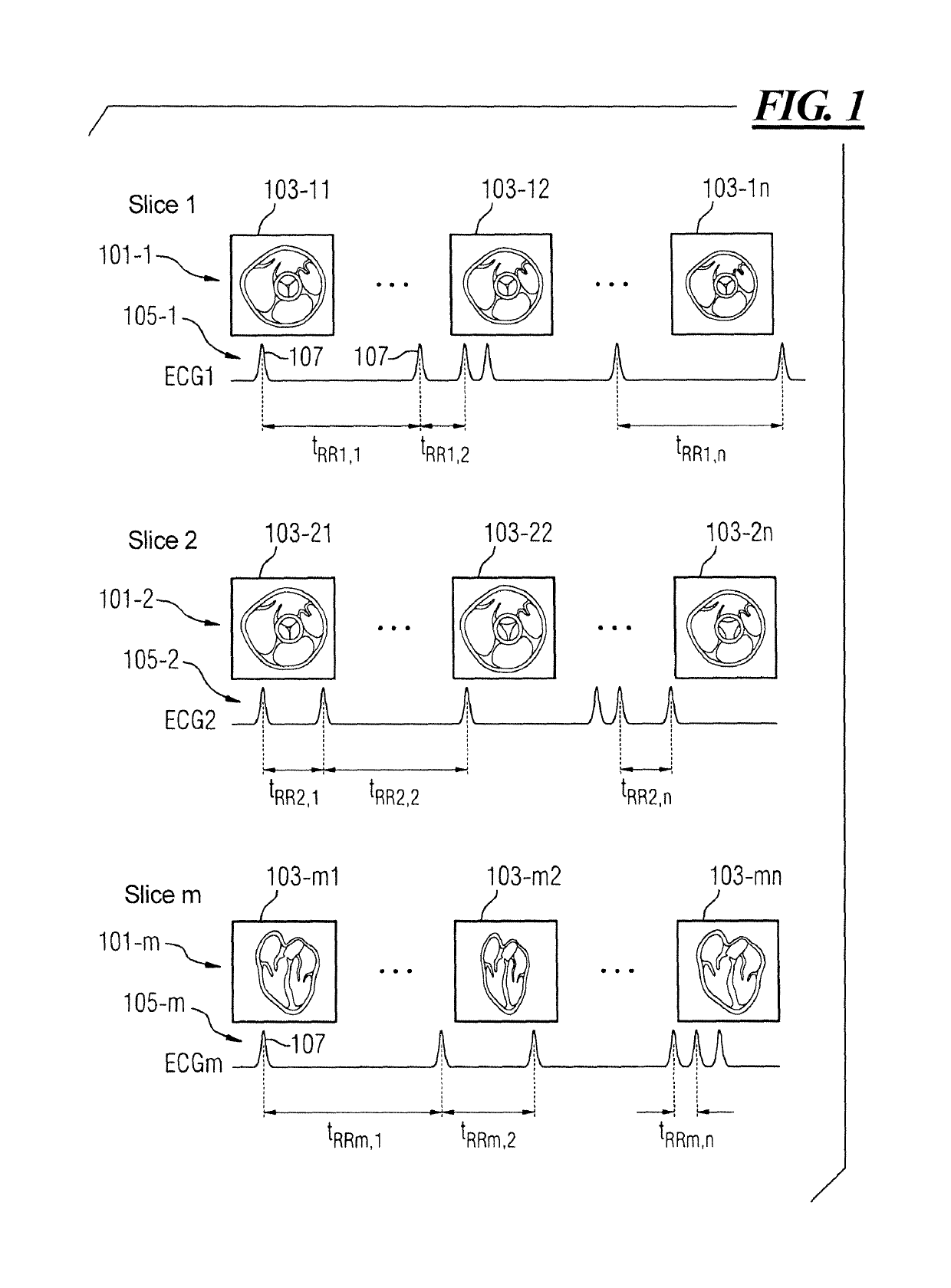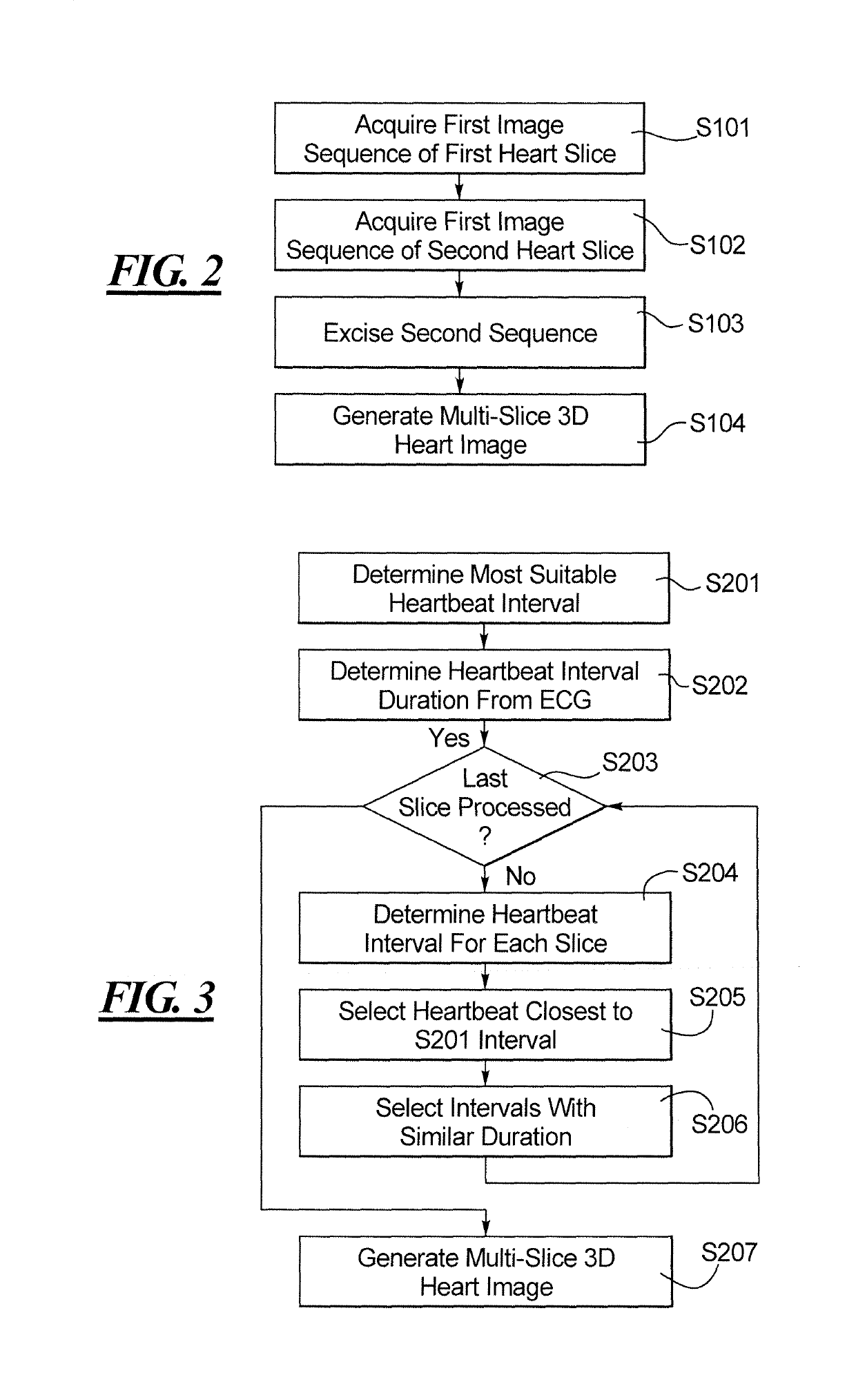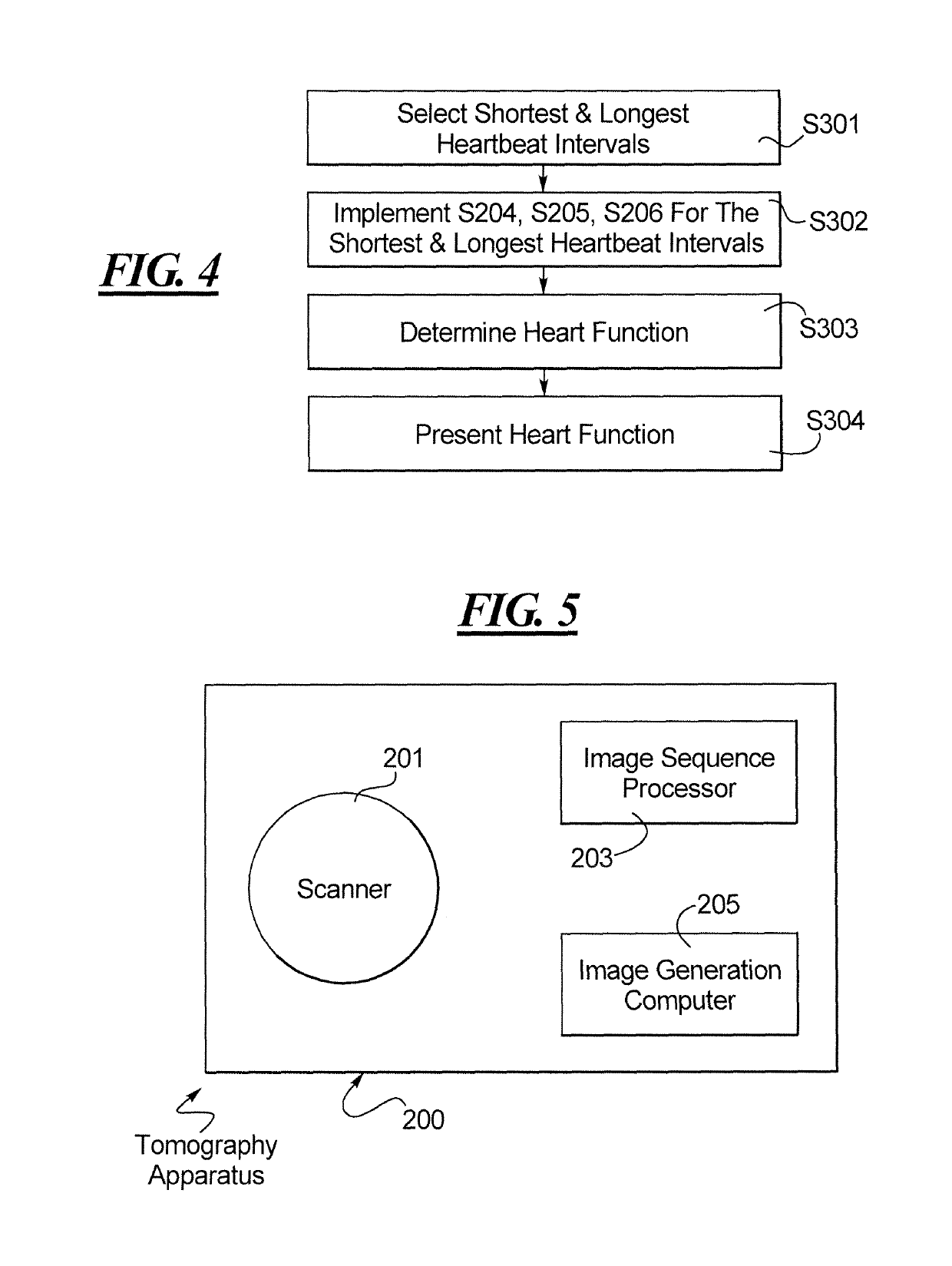Method and apparatus for generating a multi-slice data set of a heart
a multi-slice data and heart technology, applied in the field of three-dimensional multi-slice data sets of hearts, can solve the problems of infrequent use of methods and inability to reliably calculate heart functions, and achieve the effect of improving the resolution of three-dimensional recordings
- Summary
- Abstract
- Description
- Claims
- Application Information
AI Technical Summary
Benefits of technology
Problems solved by technology
Method used
Image
Examples
Embodiment Construction
[0028]FIG. 1 shows a representation of image sequences 101-1, . . . , 101-m in different slices of the heart. The image sequences 101-1, . . . , 101-m are generated by means of a tomography method, which can determine the inner spatial structure of an object and represent the same in the form of sectional images.
[0029]FIG. 1 represents the situation when acquiring MR realtime data in a number of slices using prospective gating which is obtained over several heartbeats. For each slice orientation, like for instance the short axis (SAX) or the long axis (LAX), a number of heartbeats are plotted and stored together with an electrocardiogram 105-1, . . . , 105-m. The duration trr(m, n) is the duration of the heartbeat interval (RR-interval) of the slice m for the heartbeat n.
[0030]Each of the image sequences 101-1, . . . , 101-m includes a number of two-dimensional images 103-11, . . . , 103-mn, which represent a sectional image of the heart in a certain slice. The image sequence 101-1 ...
PUM
 Login to View More
Login to View More Abstract
Description
Claims
Application Information
 Login to View More
Login to View More - R&D
- Intellectual Property
- Life Sciences
- Materials
- Tech Scout
- Unparalleled Data Quality
- Higher Quality Content
- 60% Fewer Hallucinations
Browse by: Latest US Patents, China's latest patents, Technical Efficacy Thesaurus, Application Domain, Technology Topic, Popular Technical Reports.
© 2025 PatSnap. All rights reserved.Legal|Privacy policy|Modern Slavery Act Transparency Statement|Sitemap|About US| Contact US: help@patsnap.com



